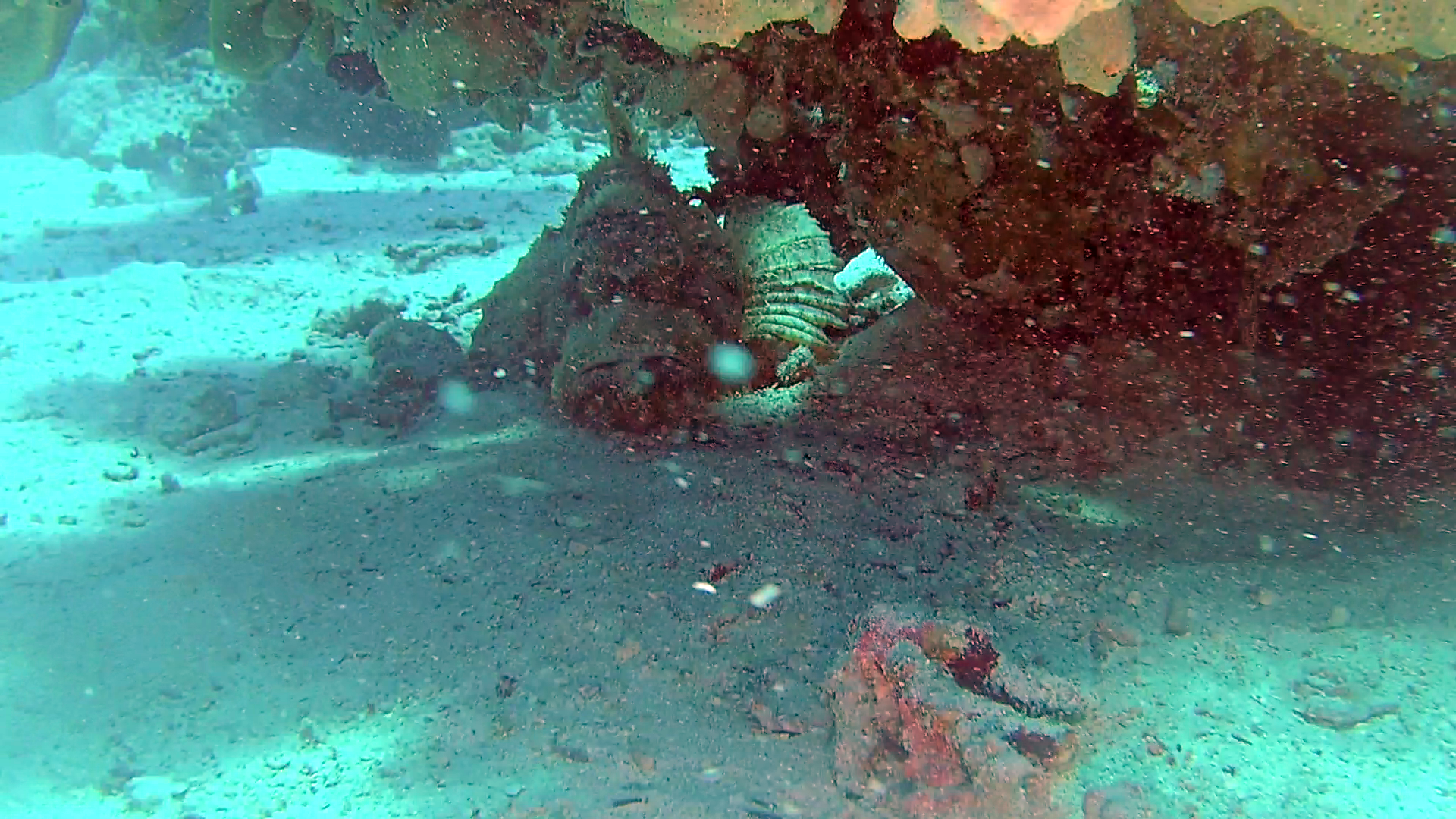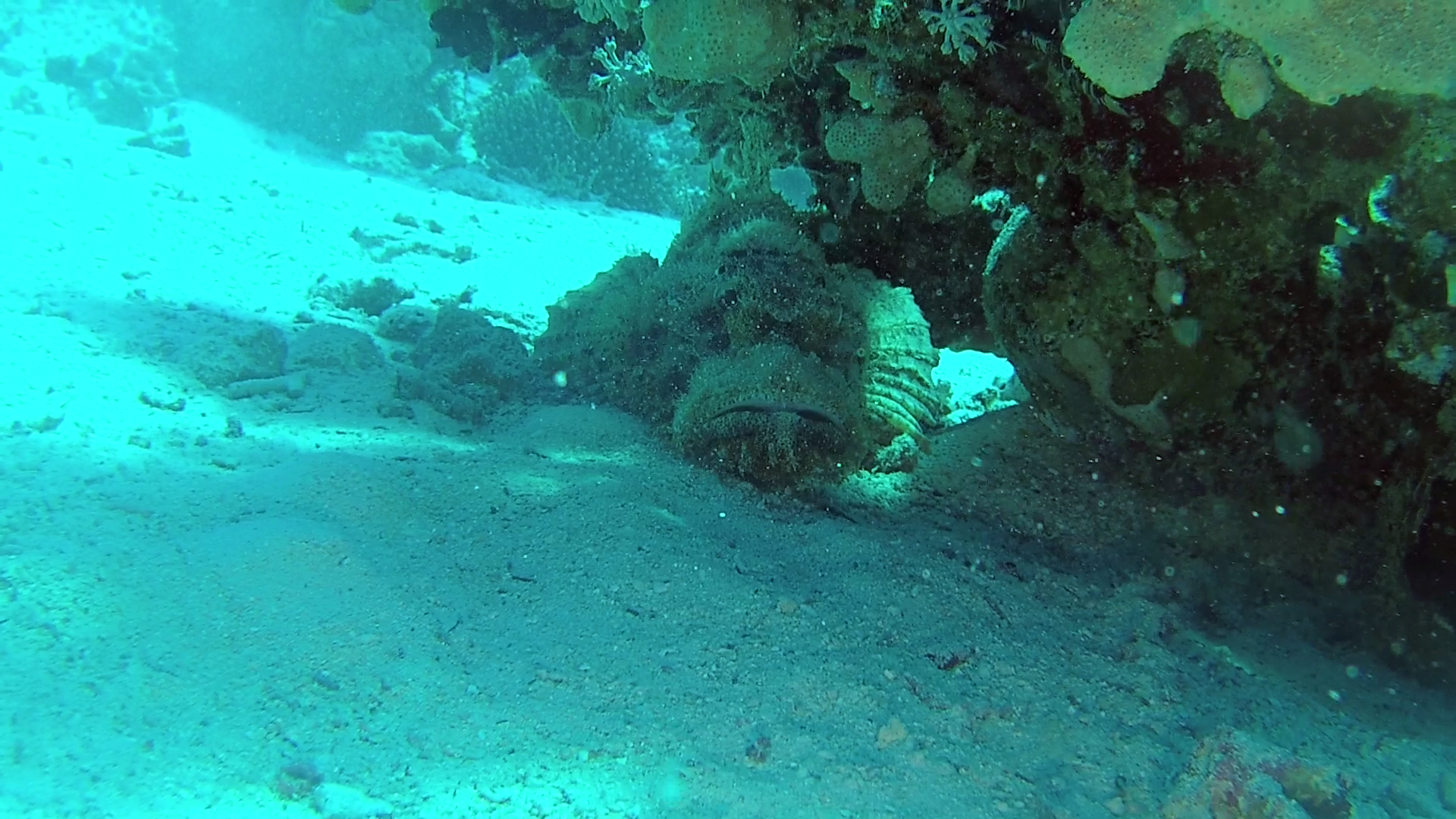Pesce Pietra - Synanceia Verrucosa
Synanceia verrucosa is a fish species known as the reef stonefish. It is a carnivorous ray-finned fish with venomous spines. It lives on reef bottoms camouflaged as a rock. It is the most venomous known fish in the world. It can be lethal to humans. Pesce Pietra Synanceia Verrucosa Reef Stonefish intotheblue.it

Description
This stonefish is usually brown or gray, and it may have areas of yellow, orange or red. This species reaches up to 30–40 centimeters long; a specimen of 51 centimeters has been recorded.
Distribution and habitat
This stonefish lives primarily above the Tropic of Capricorn. It is the most widespread species in the stonefish family, and is known from shallow tropical marine waters in the western Pacific Ocean and the Indian Ocean, ranging from the Red Sea and coastal East Africa to French Polynesia and southern Japan.
There is also evidence showing that S. verrucosa occurs in the far eastern Mediterranean Sea, either through release of aquarium specimens or Lessepsian migrantion via the Suez Canal. The first documented individual was an adult that was captured in 2010 near Yavne, Israel.
This fish lives in coral reefs. It may settle on and around rocks and plants, or rest on the seabed.

Feeding
The reef stonefish eats mostly small fish, shrimp and other crustaceans.
Toxicity
The reef stonefish is the most venomous fish in the world. Its dorsal area is lined with 13 spines, each of which has two venom sacs. The spines are sharp and stiff and have been known to pierce boot soles.
Effects of the venom include severe pain, shock, paralysis, and tissue death. A large dose can be fatal to humans, generally young children, the elderly, and those with weakened immune systems. Medical treatment includes the antivenom. A local anesthetic can reduce the pain. First aid includes immersion of the affected limb in hot water; this is thought to help denature the proteins in the venom. The immobilization of venom at penetration site using a tourniquet or firm constrictive bandaging is no longer recommended. Surviving victims may have nerve damage, which can lead to local muscle atrophy.
The venom consists of a mixture of proteins, including the hemolytic stonustoxin, the proteinaceous verrucotoxin, and the cardiotoxic cardioleputin.
https://en.wikipedia.org/wiki/Synanceia_verrucosa
